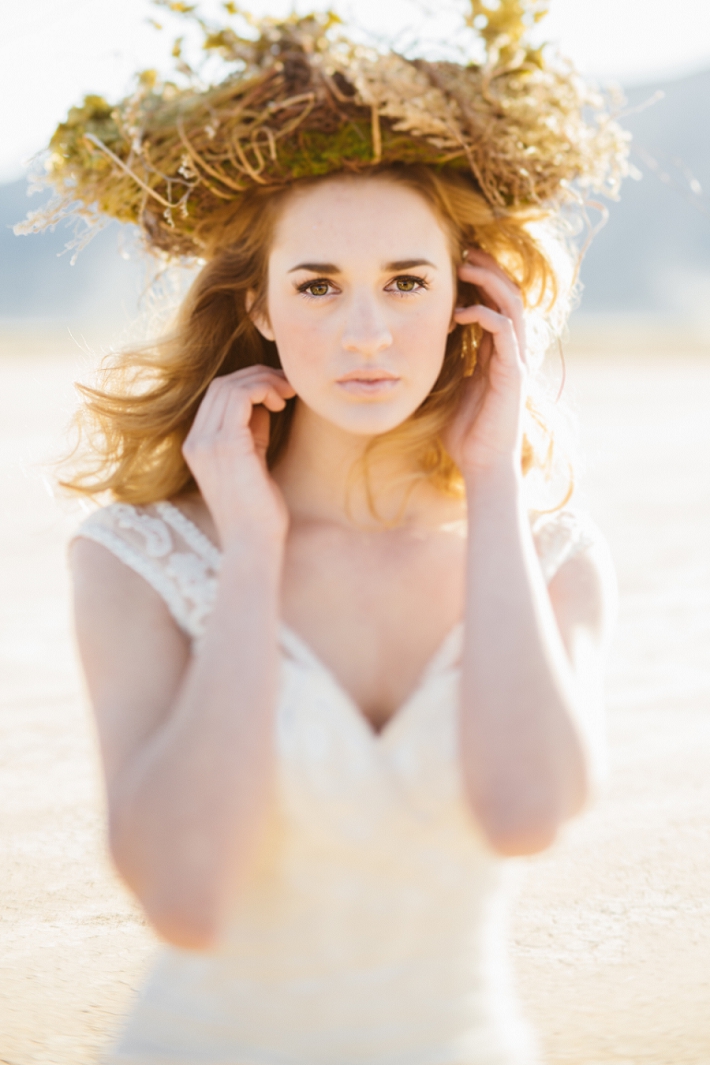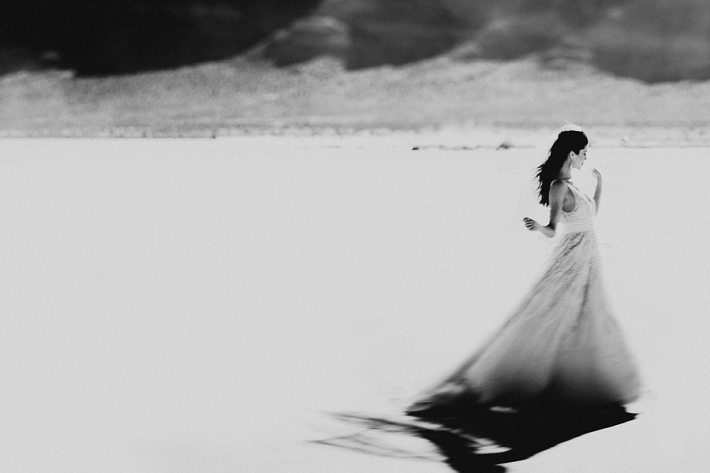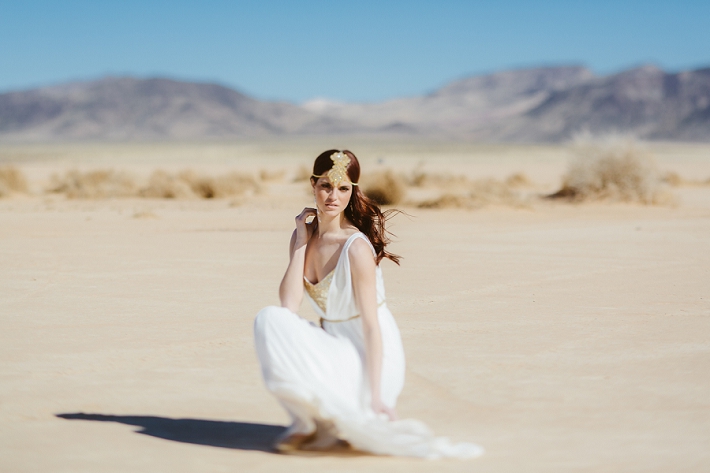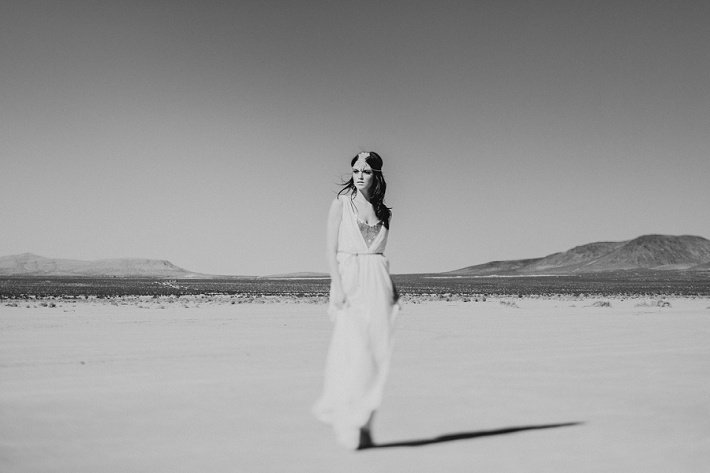About two months ago I was thinking about my upcoming wedding season that starts this weekend and lasts till June. Shooting a wedding every weekend can really challenge your creativity. So I decided I would add a 90mm tilt-shift lens to my bag to give my creative side a boost of adrenaline. I didn't realize how refreshing it would be to use this lens. In just a few months it's become my new favorite. Read on to learn why and see some photos taken with it.
I should start by saying just because this happens to be my new favorite lens doesn't mean you will enjoy it just as much. It is not one of those lenses that everyone throws on their camera and loves immediately. (Yes I am looking at you 70-200mm!) But if you are looking for something other than what everyone else has this might be the lens for you. Here are some of the reasons I love the Canon TS-E (Tilt Shift) 90mm f/2.8.

First just a quick introduction into Tilt-Shift lenses. For those not familiar with them, a T/S lens has a few different dials on the front to Shift, Tilt and Rotate the lens axis angle relative to the focal plane. For years I had seen tilt-shift lenses being mainly used in architecture work. By shifting the lens the photographers were able to get buildings that looked like they were falling backwards in photos stand up straight and by tilting the lens they were able to get the entire building in focus because the lens axis matched the angle of the building. But soon these lenses gravitated into the portrait, commercial and even wedding industry. One wedding photographer who uses the tilt-shift lens a lot and creates absolutely stunning work doing it is Clayton Austin. Many of you have probably seen timelapses using tilt-shift lenses that make the scene look like a miniature world. They do that by shifting the lens in reverse of how it would normally be used and create a very selective area of the picture in focus. Canon makes 4 different tilt-shift lenses, 17mm, 24mm, 45mm, and the 90mm. The most popular is the 24mm, but I decided instead that for my bag I would get the 90mm. I chose the 90mm because I knew I would be using it for portrait work as well as detail shots.

Tilting is useful when you want to achieve a pan-focus effect with a shallow aperture setting and a fast shutter speed, or, if you reverse the tilt so it does not match the plane of focus you can drastically reduce the area of the picture that remains in focus. So for example if I were shooting a couple up close and I wanted nothing but their faces in focus I could tilt the lens to blur everything in the picture but their faces creating a unique effect. By doing this you are drawing attention to certain areas of your pictures using this selective focus technique.

One thing to keep in mind when using a Tilt-Shift lens is that you must manually focus your shots. For those of you who have never had to do that, it can be a bit frustrating. I on the other hand loved it. It reminded me of the days shooting film with my Canon AE-1. For those doing this for the first time, there are different focusing screens that can be purchased for your DSLR that can make this process easier. A grid screen, for example, can be used to facilitate accurate alignment of horizontal and vertical lines in the scene. Using manual focus really causes you to slow down just a bit and really think through each scene rather then just press a button to focus then shoot. One thing to keep in mind is that without a grid screen you can still use the focus audible beep on your camera to confirm a focus. I do this by selecting a focus dot in my viewfinder and putting that on the part of the image I want in focus. I then press down the back button focus button while manually focusing my image. Once the focus dot is in focus it gives me a beep confirmation. Another easy way to do it is by using Live View on your camera. That said, I would not use this lens if I had a couple walking towards me and I wanted to make sure each shot was clean. As I get better at tracking with manual focus it might be easier, but right now I would rather use a lens compatible with a continuous focus (AI-Servo) mode instead.

The optics built into this lens achieve outstanding performance and the blur created is very natural looking. While I have used the tilt-shift blur feature built into the new Photoshop in the past, I have found the blur coming straight from the lens to be more favorable. In the near future I will do some comparisons and post them in an article here on Fstoppers for you to compare and see which you prefer. The build quality is great and feels on par with an L-series lens. I also did not notice any chromatic aberration or barrel distortion in the photos.
As a wedding photographer, I shoot a lot of detail shots. These include the rings, the flowers, invitations and table settings. This lens has been great for this. Now a disclosure is that my first pick for these details is my 100mm f/2.8 L series macro lens. But once I have fired off some shots with the 100mm, I will pop on my new tilt-shift and grab some additional shots. The reason I love using it for details is because I can shoot at 2.8 thereby giving me a narrow depth of field but still tilt my lens axis to match that of the flowers for example. Doing that allows me to get more of them in focus while still giving me some beautiful bokeh pulling them out of the background and making them pop. Focusing is possible down to an extremely close shooting distance of 0.5m/1.6ft enabling effective close up photography. A maximum magnification of 0.29x is available.

In conclusion, the reason the T/S-E 90mm f/2.8 is now my favorite lens is because it causes me to slow down to really focus on what I am shooting, selectively focus areas of my photo and create images unlike everyone else while still providing me amazingly sharp images. If you are on the fence, rent it and give it a go to see if you like it.
Couple useful resources:
My Photos from Thirst Relief Benefit Shoot - most of the images were shot with the T/S-E 90mm lens.
Lens Manual from Canon for the Tilt-Shift Lenses
Clayton Austin Blog - Amazing wedding photographer who inspired me to look into tilt-shift lenses.
For those of you that enjoy studying the MTF charts, here is the one on the T/S-E 90mm.








often conventional EF24mm f1.4L lens is my favorite 'scenic landscape portrait' lens, as it affords wide context shots in either open spaces or extremely tight indoor/urban spaces, along with very high DoF common to wide lens FL FoV.
However, a TSE 24mm f3.5L lens allows one to shoot in bright conditions with faster shutter speeds and even tighter apertures than one normally would, and still achieve ridiculously shallow 'isolating' DoF uncommon to wide lenses but commonplace for most longer FL tele lenses (45/90+), with subjects close up, or far off. (i prefer my subjects much closer 'whole body' (ideal for wide-short-FL lens) than farther out 'whole body' (required by tele-long FL lens))
I don't understand the purpose of a lens like this one...
He says he has tried Photoshop blur and the blur coming out of the lens is more favorable. I would agree, but why would you want a picture with an effect that you can't remove or tweak.
At least with Photoshop you can put an effect exactly where you want it and then apply more or less effect as needed. I understand the quality might not be equal to an optical effect but it is a lot less restrictive.
Lenses like this one or the popular lens babies, Which, pretty much do the same thing as the TS lenses, are great for people who don't want or know how to use a computer.
There are also many third-party plug-ins for Photoshop that let you apply selective focus to images with amazing control and probably better quality than Photoshop itself
Hi Patrick, there is actually quite a bit more that can be achieved with a tilt-shift that is impossible to recreate in Photoshop. The photos here that I posted just focus on the blur but in the future I could do an article on other ways to use the T/S lens... ways that cannot be recreated in Photoshop. Also while out today on a shoot I did some shooting of the same scenario with the T/S lens tilted for blur and some without. I will run some comparisons in Photoshop and post here soon. I am curious to see the results myself.
Yeah but no but .. applying those filters and plugin effects in PS is sooo damn boring ...
I am a Seasonal Software Developer ... and I love my computers .. (spend two third of my life sitting on it) but applying those post processing is so damn boring for me .. its like am killing my brain on something of very low value .. on the otherhand ... applying these techniques in the field is always so refreshing .. engaging and after you learn techniques often requires much less time compare to sitting Photoshoping .. and As Trevor mentioned about adrenaline .. this one word says everything!
I recently used DoF filter .. and guess how much that plugin pi**ed me off!! So even if you may argue similar things can be done this way or the other .. I would say your passion will drive you hard ways to reach some amazing results .. at the end .. the main thing is .. the photos at the end are georgeous!! and the article itself gave masses (including me) some new ideas ..
Thanks Naveed. Glad you enjoyed the article.
If you have more objects that have intersecting focus planes, you cannot replicate this effect in PS. As someone mentions, lightfield cameras have the depth information available but no other camera does, nor does PS have means to use that information. Simple tilt-shift effects can be replicated by using graded blurring but that is a very simple effect and disregards spatial information. That said, I agree that Trevor Dayley pretty much uses the TS as a Lensbaby - a Lensbaby with a lot better optical performance. So I guess he is excused, for the pictures are bloody awsome :-).
Yeah I am with you. In these examples I mainly used it for the blur. Thanks so much for the comments on the pics. I will follow up this article with more information about how to use the T/S in different ways other than what I show here. Thanks again Thniels!
It is impossible to achieve the same thing in photoshop. Let me explain. The TS is able to shift the plane of focus to achieve maximum depth of field where you want it to be while keeping the lens wide open at f/2.8. That makes macro or detail shots in a dimly lit interior possible. There is no way you can always shoot f/16 to get the dof required from. The blur seen in most of the photos are just a nice effect you can get from shifting the plane in the opposite direction. Also the shift feature allows you to achieve paralled vertical lines in arcitectural photography.
It's as if you answered your own questions..You ask agree that the blur coming from the actual in lens effect is more favorable than the photoshop version...Then you ask why would someone choose it over photoshop?? Well, because it is better, more favorable, more beautiful, and not producable in photoshop.
In the field a good event photog has to shoot a number of shots. You shoot with several types of lenses and different scenes/scenarios. This is to help capture the moment and different 'looks' (etc.). I could shoot for shooting average shots and then tweak them all day in photoshop...because then I could go back to the average shot if I didn't like it....Or I could shoot interesting above average shots 'in the field' AND get interesting looks AND spend a lot less time in post production. Besides, if you can get it done in the field, it usually saves you time. There is very little turn around time ater the event. Most clients prefer to have thier pictures as quick as possible...and you sell more shots by providing them in a very quick and timely fashion...more pics sold while the moment is still 'fresh'.
If at all possible...and if you have a demanding schedule...then, the most amount of time spent for this type of project is at the actual event. In the field...'in camera' effective effects save time...are more organic and realistic for the environment...look full of life (not sterial'...and save you LOTS of time later. So, what if an novel technique or experimental shot doesn't turn out. If you planned right (for the event' ahead of time...then. you will have lots of other shots to offer...and can go on to the next shot. It's just like producing/shooting a movie...plan, plan, story board, then shoot...If proper planning is done...then, you are better prepared for any possible scenario with better equipment, etc...AND there is much less post production work..AND the post production work can be quality tweaks and edits that have a higher impact rather than what if I do this...or what if I do that...and then countless hours have passed with VERY littke results.
Thanks for sharing your technique mate; and the results are wonderful!!
Damn you Trevor. Another lens I want to buy now! (or at least play with) :)
Great photos and info. I also enjoying creating similar focus results in post. Nik software is really helpful or doing it manually by feathering blur in Photoshop is always an option.
I'm heavily using the TS-E 90mm for my work since several years. I find
it fascinating to discover new ways of taking pictures diretly on-site,
not using PS in post pro. Check yourself: http://www.gernotsinger.com/
Trevor,
Great article! Like you, I thought T/S lenses were for architecture or close up nature photography. But it makes sense the way you explain it to bring some of the photographs out of focus while keeping the primary subject in focus. Great photos taken with the T/S lens.
Losing autofocus wouldn't be a deterrent for me since I haven't switched to a autofocus camera. My original Canon A-1 still works fine; the only problem is that Canon only made one T/S lens for the FD mount, a 35mm f2.8 T/S.
I will applaud your desire to use innovative tools and techniques for various types of photography. While I find it somewhat intersting, I am not one who would be using this kind of lens for weddings. You are an excellent photographer. I just don't particularly like the results in this case. Based on how good I think tou are, I believe you could have used the time using other techniques to provide more interesting images for your client.
I like these pictures - this is photography as graphic design. There is something charcoal sketchy about them. Good stuff, thanks.
It has been long known that T/S lenses can be great for shooting magical portraits. However, you need three ingredients to make such magical portraits: patiens on the part of the model, time on the part of the photographer, and the decor / scenery. In a real life wedding shoot, you get NONE of these three. It is hard enough catching the right moment in a flash of second. Can you imagine... the moment when the groom pushes the ring on the finger of the bride? Me asking: "Just hold it there for a few minutes while I adjust my T/S lens. Total nonsence! Therefore the title of your article: How to become a professional COMMERCIAL wedding photographer holds no ground in regards to using a T/S lens and shows, if anything, it shows your total lack of realism when it comes to professional weding photography.
John, I think you have mistaken the title of the article for an ad selling a DVD. The title is not "How To Become a Professional Commercial Wedding Photographer." Had it been I'd 100% agree with you that it would be total nonsense. Lol. Your first point about trying to capture wedding photos with this lens is too difficult. I would have have to disagree with that. Using this lens is not rocket science. It's as easy as manually focusing, which for anyone who grew up in the days of SLR cameras (drop the Digital) would actually find manually focusing quite rejuvenating. I did mention in the article though that there are definitely moments when this lens would not be on my camera such as when someone is walking towards me. If you stay tuned to my Facebook page or website you will soon see quite a few wedding photos being shot with this lens. I just did a wedding yesterday in fact where I use it quite a bit with a lot of success.
Are these actually brides? They all look like models (which I guess could be brides too). Also, while I like the images, nothing about them portrays "wedding" IMO.
Jerm this was part of a benefit shoot for Thirst Relief International while in Las Vegas for WPPI.
good point.. more wedding shots from photo shoots and not weddings.
These a beautiful shot's.. and thats the goal of it all.. the lens is just a tool..
I look at tons of photos online and I've seen this quite a bit in the past several years. Anastasia Volkova uses Lensbaby to achieve this effect for example. Much of what I've seen may not be a true tilt shift lens like this one, but many people are using Lensbaby because of the price (or iphones and copies of Photoshop to fake it).
The 2nd, 3rd, and 4th shots are very beautiful. I am glad to be introduced to T/S lenses. I would like to try using them myself.
Thanks for lovely article! I have this lens and using it for product shots, you pushed me to explore on portrait.
TS lenses were never designed to create blurry, cliche photos. They were designed to create an infinite depth of field, as well as render distortion-free architectural images and create panoramics. To build your whole style on a single lens is just silly. that's like building your whole business on spot coloring, or that piss-yellow effect popular from a few years ago. EVERYONE is doing the TS effect, whether in post or using the actual lens.
IT's rare to see photographers actually using this lens for it's strengths (infinite DOF) and not blurring everything into oblivion.
James you are correct about what they were designed for just as I had mentioned in the article. I also agree with you that it would be silly building your business around one single lens. Not sure why that was even brought up though since it was not mentioned in the article. I do agree that the lenses were not created to create the blurry images however even Canon themselves have now recognized that using them for that is in fact useful. In their book they published about all their lenses, they specifically mention using the 90mm TS-E for portraiture and discuss the "reverse tilt" to "achieve unique and innovative photography unattainable with normal lenses even at large apertures." So I'd venture to say that even Canon is now on board with using the Tilt-Shift lens for creating some cool portraits that draw your eye to certain areas of the image while blurring the rest. Just my thoughts though. :)
Love it..
Why not use a lens baby???
Great article - thanks for sharing. Have you used a 45mm TS? If so any pros / cons to the 90mm?
Thanks for the well written article. Can you tell me if you've had experience using any of the Canon focusing screens and if you've found them helpful when utilizing a TS lens? I'm considering the EC-L screen, but wanted your view if you've used them. Thank you.
Pfft... I can make my pictures look like that with petroleum jelly smeared across selective areas of the lens. Forget gaussian blur, I just add crazy-blur-blur!
Haha... again, totally joking. Tilt-shift is very cool, and so are the images above. The comments indicating that this can be achieved in post (or in-shot with lots of lens smudging) simply don't understand the concept of focal planes.
Hi Trevor, I love this series of pictures, the colors are awesome!. Do you have any tutorials about how to shoot in harsh light without blowing out the backgroung? Thanks!!!!